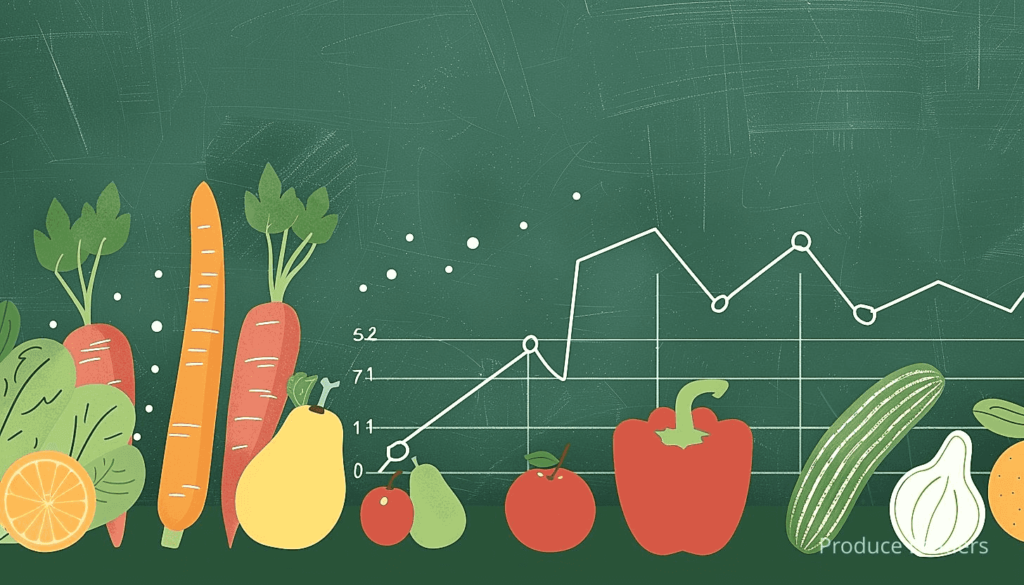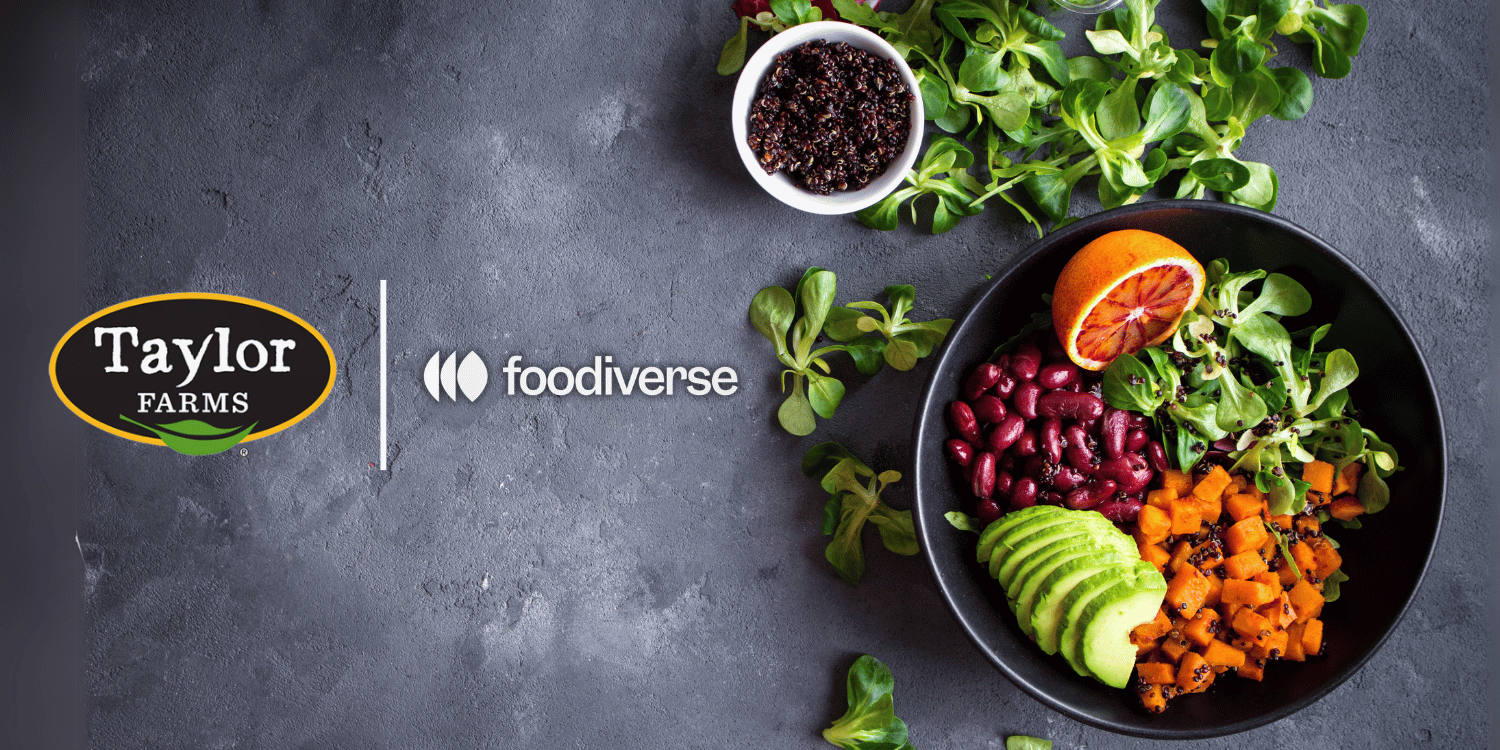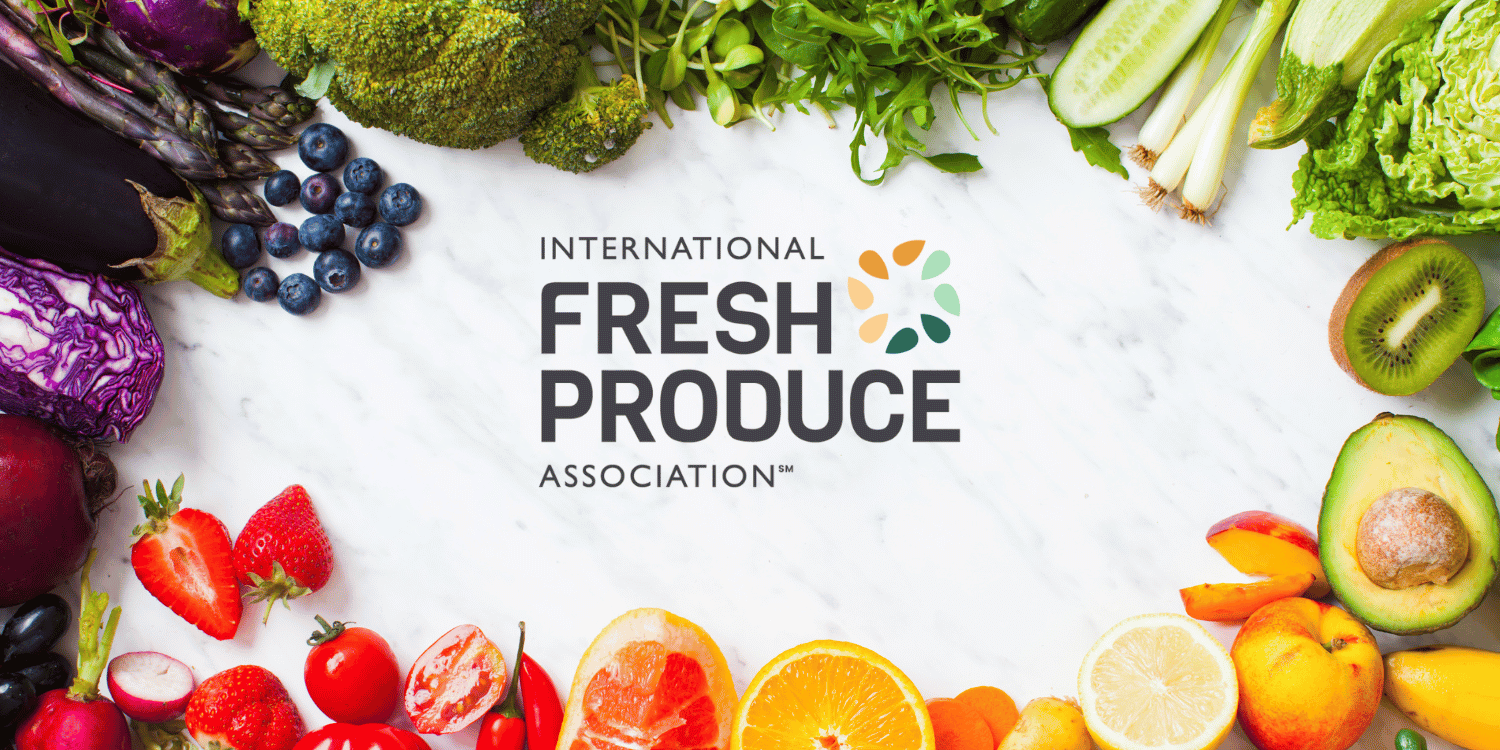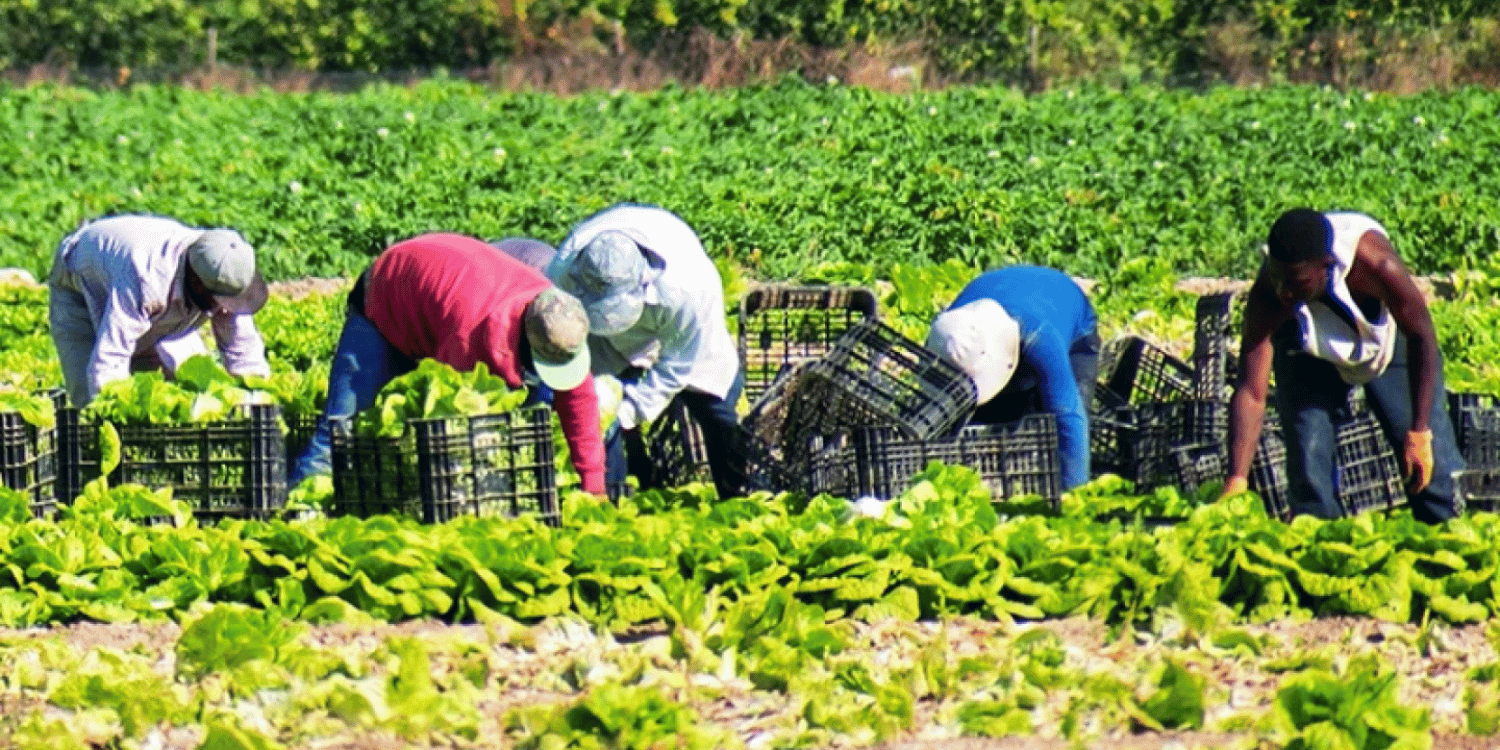Nutritional education has shown to significantly impact produce sales.
Through informed choices made by consumers, sales for fruits, vegetables, and whole grains increase when the nutritional value of these items is well understood.
Educational campaigns promoting a balanced diet rich in fresh produce have been effective in boosting the market.
For instance, schools that implement nutrition education programs often see a notable rise in the demand for healthier lunch options.
Additionally, retailers who provide nutritional information at point of sale report higher turnover for produce.
Overall, educating the public about the benefits of nutritious food can effectively drive produce sales.
- Exploration of what Nutritional Education signifies.
- Analyzing the impact of Nutritional Education on sales.
- Discussion about consumer choices and their nutritional knowledge.
- Influence of nutritional campaigns and market boost.
- Importance of school programs in shaping lunch choices.
While we have introduced the significance and influence of nutritional education on produce sales and consumer choices, there are other essential elements to consider in this exploration.
In the following sections, we’ll touch on the broader implications of nutritional campaigns, from the market boost they provide to businesses, to the way they shape our choices and habits in daily life.
We also dig in into the role of educational institutions, particularly their influence on school lunch programs and how kids understand the importance of nutrition.
Each of these topics contributes to a comprehensive understanding of the subject matter, and will provide you with valuable insights to better navigate the practical applications of nutritional education.
Contents
- What is Nutritional Education?
- Impact of Nutritional Education on Sales
- Consumer Choices and Nutritional Knowledge
- Nutritional Campaigns and Market Boost
- School Programs’ Effect on Lunch Choices
- Retailers’ Experience with Nutritional Information
- How Education Drives Produce Sales
- Benefits of Nutritious Food Promotion
- Case Studies on Nutritional Education
- The Bottom Line
What is Nutritional Education?
In Short: Nutritional education is about empowering individuals with knowledge and understanding to make informed food choices, emphasizing the effect of these choices on their health. This education is a long-term process, assisting people to adapt their diet through various life stages, promoting healthy eating habits and combating health issues like obesity and heart diseases.
Nutritional education, at its core, revolves around the knowledge and understanding of how different food and nutrition choices can affect one’s health. It’s about empowering individuals with the information they need to make informed food choices.
Wouldn’t it be easier to make healthier choices if we understood the nutritional value of what’s on our plates? Nutritional education aims to do just that.
There’s not just one way to conduct nutritional education. It could be delivered through different channels and in a variety of formats.
Before we dig in into the different delivery methods of nutritional education, let’s look at some key components that are typically included in any nutrition education program:
- Food groups and their impact on health.
- The importance of balanced meals.
- Reading and understanding food labels.
- Risks linked with poor nutritional choices.
- The role of physical activity in maintaining health.
Depending on the audience, the structure of nutritional education can widely vary, though its intent remains the same. Whether it’s children in classrooms, or adults in a community setting, the aim is to elevate awareness and foster positive dietary practice.
Nutritional education isn’t just memorizing the caloric content of foods. Do you think calories are the only thing that matters in a healthy diet?
Aside from the simple calories-in-calories-out equation, there’s so much more to learn about nutrition.
And that’s where nutritional education extends its role. It encourages understanding the nutrients, their functions, how different food choices affect one’s health, and how to balance food intake.
Undeniably, nutritional education plays a pivotal role in setting a sound foundation when it comes to dietary habits. Often, we make choices not out of our dietary needs, but our food preferences, which might not always coincide with the former, right?
That’s right. What we like isn’t necessarily what’s good for us. Nutritional education helps bridge this gap by fostering a healthier relationship with food.
In essence, nutritional education provides the tools to transform knowledge into action, promoting a healthier and more informed relationship with food. It’s not just about what you eat; it’s why and how you eat it too.
Nutritional education is a life-long endeavor. Do you think nutritional education ends after a few classes or workshops?
No, certainly not. Our body’s nutritional needs change as we age. Nutritional education helps us adapt our diets accordingly, ensuring we are fuelling our bodies with what they need at every stage of life.
In the end, nutritional education is about equipping individuals with knowledge and skills to develop healthy eating habits — paving the way towards a healthier and more informed population. Not just understanding what’s on the plate, but also how it fuels the body and impacts overall health.
And, is it not important to make such conscious choices today more than ever, given our fight against obesity, diabetes, and heart diseases?
Absolutely, it is. But remember, the journey towards a healthier lifestyle begins with a single step, and perhaps, that could be nutritional education for you.
Impact of Nutritional Education on Sales
In Short: Nutritional education can influence consumer purchasing decisions in the produce industry, potentially driving market trends and boosting sales. Its success, however, relies on factors such as accessibility, relevance, and interactive learning opportunities.
It’s no secret, the importance of quality nutrition can’t be overstated. But, could it also influence market trends, particularly in the produce industry?
Studies paint an interesting picture. It seems that when consumers are equipped with more nutritional knowledge, they tend to make healthier decisions at the store.
The caveat, however, is this. Nutritional concepts can be quite complex, taking more than a pamphlet to fully grasp. Hence, it raises an intriguing question: if we provide nutritional education, can it indeed boost produce sales?
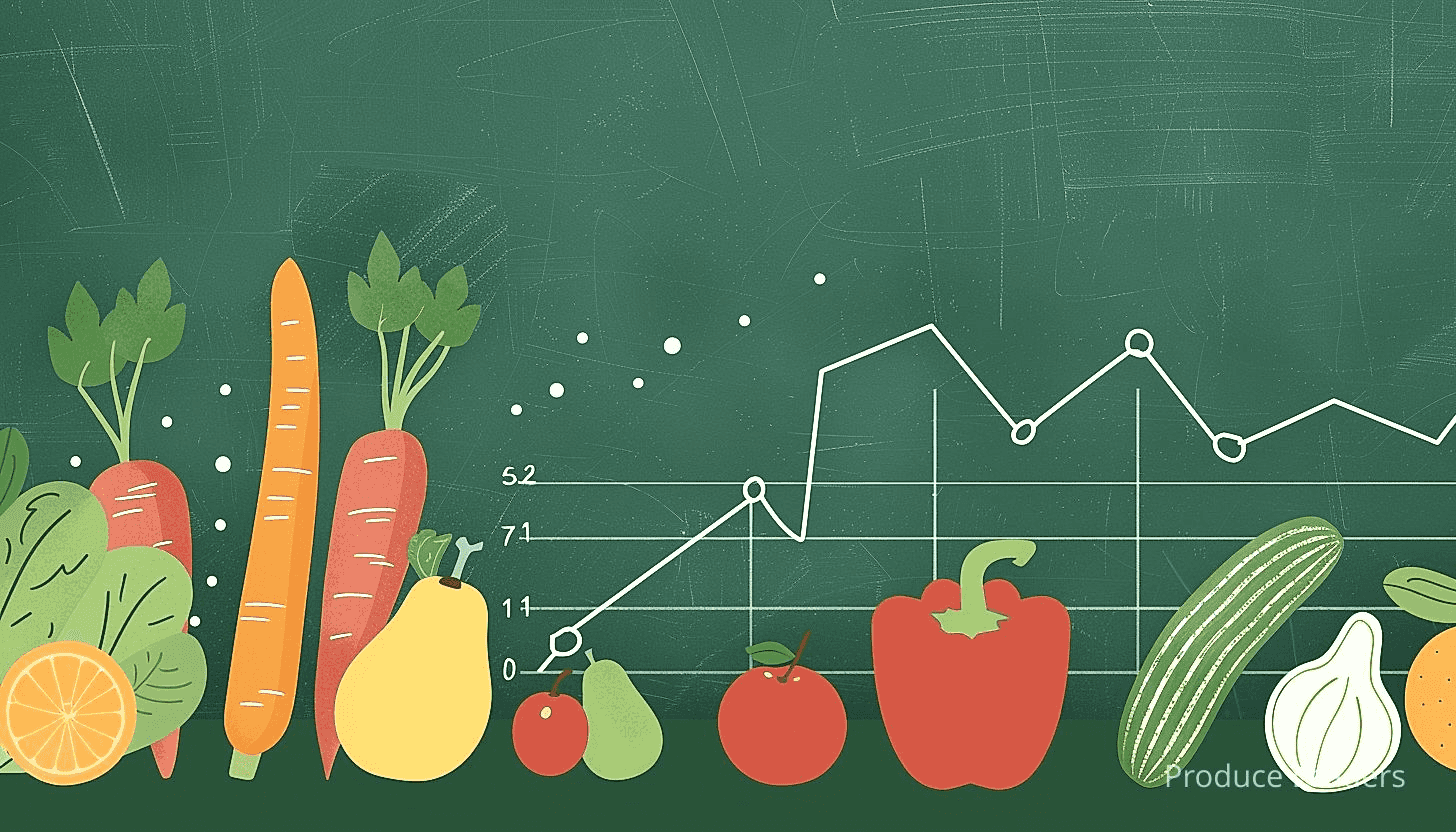
Is it not true that consumers often feel overwhelmed when faced with an array of produce? Let’s be frank, choosing between bok choy and kale is not an easy feat for beginners without explicit knowledge on their nutritional values.
The role of nutritional education, thus, becomes imminently clear. It has the capacity to provide consumers with enough knowledge to confidently make choices leading to healthful diets. And by extension, this could indeed impact produce sales, potentially even leading to an increase.
The interesting element here is that nutritional education doesn’t just have an impact on the individual consumer. It can potentially drive market trends, creating a demand for produce previously under-appreciated due to lack of visibility or knowledge about their benefits.
What does this mean for retailers? There’s a simple takeaway. Nutritional education isn’t just a service to customers; it can actively influence purchasing patterns and boost sales.
However, it’s important to highlight a few success factors for nutritional education initiatives:
- Accessibility: Consumers should be able to easily acquire education materials or attend learning sessions.
- Relevance: Information should be practical and applicable to their dietary needs and lifestyle.
- Interactivity: Opportunities for active learning could further reinforce nutritional concepts.
It’s astonishing how powerful a tool education can be, isn’t it? Particularly when it steers us towards a healthful lifestyle and influences market trends.
The power resides in being informed and making educated decisions; this can act as a compass guiding consumers’ choices. Understanding the nutritional value of produce, after all, equips consumers with the ability to prioritize their health.
It gives, in effect, a voice to the silent section of the grocery store: the produce aisle. Ensuring that the vibrant colors, unique shapes, and promising flavors are no longer just aesthetic attractions, but a healthful advantage.
The bottom line is this. The power of education goes beyond the classroom and into the realm of the everyday decisions we make. Its impact, especially in the context of nutrition, may indeed cast a ripple effect on the dynamics of retail sales.
Could nutritional education be a potential game-changer in the produce industry? Let’s just say it’s food for thought.
Consumer Choices and Nutritional Knowledge
In Short: Consumers’ purchasing decisions for fresh produce are influenced by their level of nutritional education, with those having higher understanding often prioritizing health benefits. Nutritional education, including factors such as food labeling, diet, lifestyle, and health risks, not only enhances individuals’ understanding but also promotes healthier choices, driving up sales in the produce industry.
The decision to buy fresh produce varies among consumers. It largely depends on their level of nutritional education.
Do we ever stop to think why some people prefer organic products? To understand customers choices, we first have to explore nutritional knowledge.
Typically, individuals with a higher level of understanding about the nutritional value of different foods often prioritize fresh produce. They are aware of the health benefits and choose accordingly.
Conversely, those with less nutritional education might make their purchases based on factors such as taste, cost, or convenience. In such cases, healthy options can be overlooked. Despite this, it’s important to note – not all decisions are black and white.
But really, what influences consumers to make the healthier choice? Central to this discussion are factors that are components of nutritional education. These include:
- Food labeling: Understanding the importance of reading food labels and what information to look for.
- Diet and lifestyle: The way in which our everyday activities and eating habits impact our overall health.
- Health risks: Being aware of the health risks associated with unhealthy eating habits.
Each item plays a significant role in shaping consumer choice. But how does this knowledge translate to the buying behaviors of customers?
Well, studies have shown that with greater awareness, there’s an increase in the purchase of fruits and vegetables. Customers start to seek quality produce and are even willing to pay a higher price for better nutritional value. This is what we’re here for, isn’t it?
Now, this isn’t to say that improving nutritional education will solve everything. People’s eating behaviors are complex and influenced by numerous factors.
However, it’s clear to see the positive impact of nutritional education. It doesn’t simply shape our understanding, but more importantly our behavior. It encourages healthier choices which consequently leads to an increase in produce sales.
Pro Tip: The level of a consumer’s nutritional education significantly influences their purchasing decisions, often leading those with a greater understanding to prioritize fresh produce due to their awareness of the health benefits.
Improving nutritional knowledge isn’t just significant for each of us as individuals either. It has a positive ripple effect, affecting everything from local farming industries to international produce sales.
Now, that’s worth considering, don’t you think?
Nutritional Campaigns and Market Boost
In Short: Nutritional education, propagated through effective campaigns, deeply influences consumer behavior, resulting in increased market sales of fresh produce. This education promotes healthier choices, sustainability, value recognition, and brand loyalty among consumers, thus shaping market trends.
Have you ever stopped to consider the impact of nutritional education on your purchasing decisions? It’s a thought-provoking concept, isn’t it?
Nutritional campaigns have gradually but steadily become a part of our everyday life.
Yet, their connection with the boost of produce sales might not be immediately apparent. But trust me, it’s there!
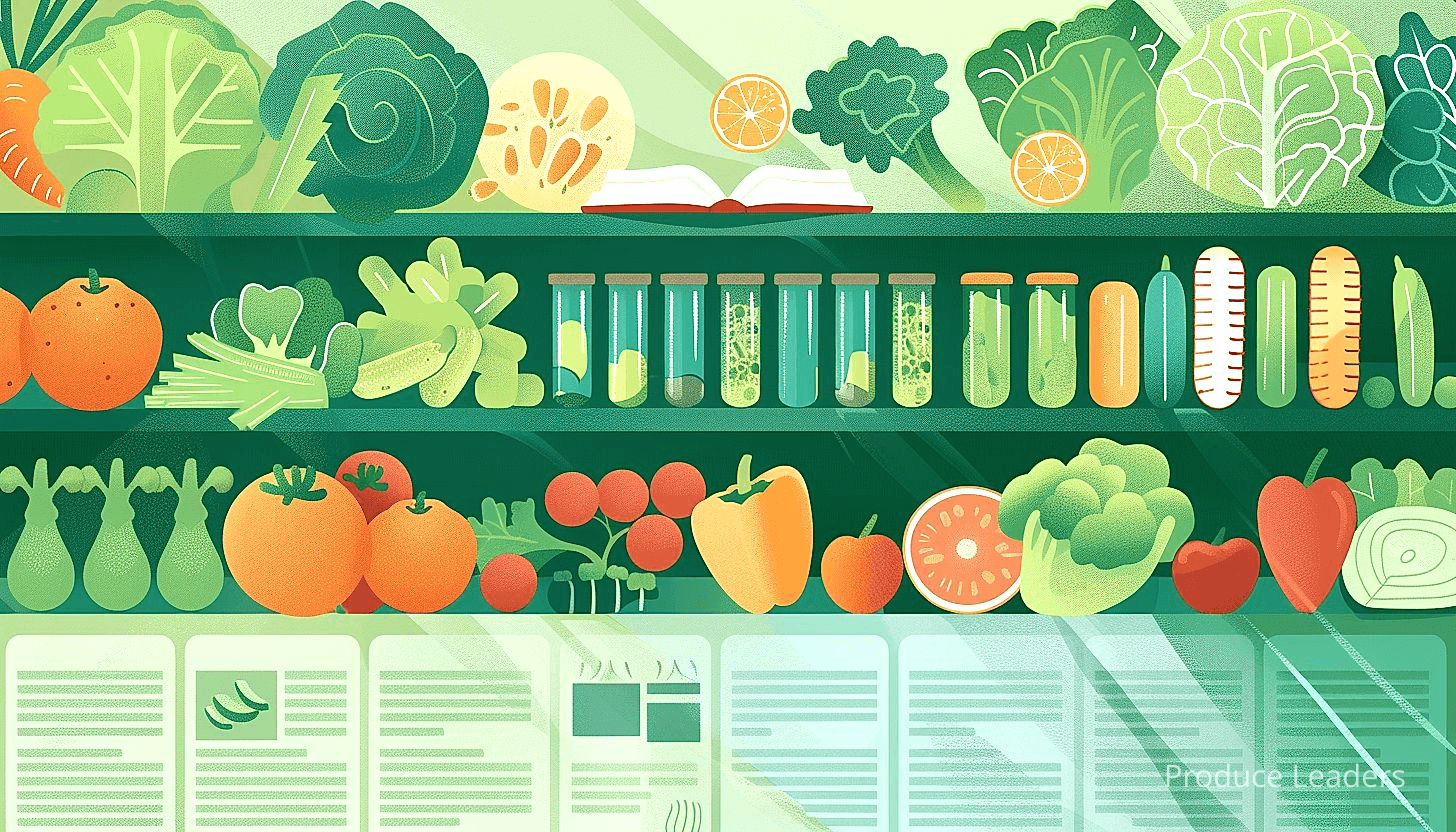
Diving into the world of nutritional education reveals intriguing instances of how knowledge can influence behavior. From selecting organic over conventional to choosing fresh over preserved, the education we receive plays a key role.
More importantly, it directly affects the market trends.
Let me tell you, let’s take a look at how nutritional campaigns resultantly boost the market. Here are a few ways:
- Increased awareness prompts healthier choices.
- Consumers often prefer sustainable and organic produce.
- Nutritional education helps recognise value for money.
- Understanding nutrition labels generates trust and brand loyalty.
As we become more aware of what we put into our bodies, we make better choices. We shift from highly processed foods to natural and fresh produce.
This shift can drastically increase the sales of organically grown and locally sourced products.
At the same time, does this education not persuade us to pay a little more for better quality? We often perceive organic and sustainably produced items as providing better value for money.
Therefore, these products experience a surge in sales.
Next up is understanding how better-educated customers have started trusting nutrition labels. They now understand what to look for in that tiny text as they’ve become ‘nutrition label literate’.
This newfound literacy not just enhances the shopping experience, but also instills trust and develops brand loyalty, followingly leading to an increase in sales.
Overall, the importance of nutritional education goes far beyond a personal wellness routine. In fact, it reaches out and molds market trends, impacting various sectors of the industry.
Isn’t it amazing how everything is interconnected and each chain reaction has its own ripple effect?
Let me tell you, the bottom line is that comprehensive nutritional education, propagated through effective campaigns, deeply impacts consumer behavior, followingly boosting market sales of fresh produce. I think we can agree that it’s an antidote for a healthier society and a flourishing market.
School Programs’ Effect on Lunch Choices
In Short: Schools’ dietary education and nutritious lunch programs have a significant impact on fostering healthy eating habits in students. These initiatives not only increase nutritional awareness but also have the potential to alter market trends for fresh produce and contribute to better health in the long term.
In many educational institutions, dietary education is now a major focus. Schools find it crucial to enlighten students about nutrition and the negative implications of poor eating habits.
Have you ever considered the power a school meal can wield? It’s often the immediate catalyst for nutritional awareness in young children. Making consistent healthy choices at a young age can form habits that will continue into adulthood, can’t it?
The school environment is a prime opportunity for children to learn more about healthy eating. School meal programs can directly affect a child’s eating habits. Can you imagine the difference these habits will make in adulthood?
When children have access to nutritious lunches, their perspective towards food changes. They begin to appreciate the importantity of making healthier choices.
Take a few moments to fully grasp the impact of schools investing in a nutritional program. When schools strategically incorporate fresh produce in meal offerings, it nudges students towards healthier lunch choices.
Let’s discuss a few key benefits derived from introducing nutritional education in schools. Here they are:
- Increased knowledge about nutrition leads to conscious food selection.
- It leads to a better understanding of the impact of dietary choices on health and wellbeing.
- Students learn how to prepare and choose healthy meals, promoting lifelong nutritional habits.
Have you noticed how children emulate what they see? Observing healthy food selection practices in school also reinforces good habits at home.
Implementation of school nutritional programs can also influence the market trends for fresh produce. How so you might ask?
By creating a demand in schools, producers are encouraged to increase the supply. This could potentially lead to an increased availability of wholesome food options at grocery stores.
An often overlooked advantage of nutritional education is how it can change the norms regarding food selection. It makes the healthier choice easier and more attractive.
Imagine a world where every child happily fuelled their bodies with fruits and vegetables. Wouldn’t it be fantastic if the next generation was more aware and cautious about their food choices?
The role of schools in shaping a child’s dietary habits can never be overstated. While the immediate impact is seen on the lunch preferences, the long-term benefits extend much further. Don’t you agree?
Pro Tip: Implementing nutritional programs in schools and providing dietary education can lead to healthier food preferences and lifelong healthy eating habits in students.
Through school programs, initiations are made to swap out the unhealthy lunch components with fresh vegetables and fruits. The resulting effects manifest in the form of increased preference for whole and unprocessed foods over time.
As we all know, the provision of nutritious lunches coupled with dietary education can offer massive benefits. If more schools could introduce and stick with nutritional education, it would greatly influence our children’s health for the better. Don’t you think so?
Retailers’ Experience with Nutritional Information
In Short: Many retailers lack adequate education about the nutritional value of their products, affecting their interactions, promotions and sales. Investing in nutritional education programs can empower retailers, benefiting their business while catering to the rising consumer trend of health-consciousness.
How much do retailers actually know about the nutritional information of the produce they sell? It’s a question that often goes unanswered – a missing piece in the overall puzzle.
Let’s dive into the world of retailers and explore how nutritional knowledge, or the lack thereof, influences their operations.
In many instances, retailers are not adequately educated about the nutritional value of their products. They primarily focus on factors like taste, freshness, and visual appeal to attract customers.

This is not entirely surprising, is it? After all, they are retailers, not nutritionists.
However, this lack of knowledge can have a direct impact on sales. It can determine how they interact with customers, what they choose to promote, and ultimately – their bottom line.
It’s time now to present some key points that illustrate this conundrum retailers are facing:
- Retailers often underestimate the importance of nutritional knowledge
- Many lack the required information to answer customer queries about nutrition
- The desire to boost sales can overshadow the need for thorough nutritional education
Are these challenges insurmountable? Of course not. Retailers can certainly take steps to improve this situation.
An effective approach is to invest in nutritional education programs. These programs can equip retailers with the information they need to confidently answer customer queries.
Consider the power of a retailer being able to convincingly explain the health benefits of, say, an organic green apple compared to a conventional one.
Not only does this inform the buyer, but it also gives the seller a unique selling proposition. This, in turn, can significantly increase the likelihood of a sale.
There’s also the option of putting up informational signage. This can provide customers with easy access to the nutritional information of the products on offer.
But does all this truly make a difference? The answer is a resounding yes.
Numerous studies have shown
that consumers are becoming increasingly health-conscious. More and more, people are actively seeking out nutritional information before making a purchase.
With this knowledge, retailers can position themselves as more than just salespeople. They can become trusted advisors – a source of reliable information.
The presence of an informed retailer can boost a customer’s confidence in their buying decision. And what happens when customers are confident? They’re more likely to make a purchase – and return for more.
As a result, nutritional education can be seen as a critical investment. It can influence not only produce sales, but also the overall success of a retail business.
After all, in this age of information, ignorance is no longer bliss. Instead, knowledge, as always, is power – it’s good for business and it’s good for customers.
How Education Drives Produce Sales
In Short: Education significantly impacts produce sales by equipping consumers with knowledge to make healthier dietary choices, encouraging diversity in fruit and vegetable consumption, and promoting ethical and sustainable decisions. Research indicates a global trend towards health-conscious consumerism, with higher educational awareness leading to increased demand and willingness to spend on fresh produce.
At a fundamental level, does education impact produce sales?
The answer is a resounding yes.
To comprehend this connection, consider the fact that food choices are much more than simple matters of taste.
Indeed, each selection at the grocery store reflects an intricate web of knowledge, values, and beliefs that have been cultivated over time.
As such, an understanding of nutrition – the science that deciphers the health impacts of dietary choices – holds immense sway over consumer behavior.
In this realm, education emerges as a critical influencer.
Why is this?
Simply put, it equips individuals with the capacities to discern between diverse options and make informed decisions.
However, one may wonder, how does this initial spark of knowledge translate into tangible shifts in market trends?
Notably, nutritional education influences produce sales through a number of key mechanisms.
Allow me to elaborate:
- The dual power of understanding and awareness undergirds the first major linkage – upon internalizing the adverse health outcomes of processed foods, many consumers gravitate towards more natural, wholefood items.
- Secondly, education often sparks curiosity and fosters an appreciation for diversity – individuals are thus more likely to engage with a wider array of fruits and vegetables, rendering the produce aisle a veritable playground of gastronomic potential.
- We also cannot underestimate the influence of ethical and sustainable considerations – environmentally-conscious consumers, bolstered by their knowledge of sustainable practices, tend to consciously choose fresh produce over packaged goods.
Above all, education plays a pivotal role in amplifying consumer demand for healthier choices.
Research indeed corroborates this phenomenon, suggesting that individuals with higher nutritional awareness are more likely to buy fruits and vegetables over junk food.
Should we consider this broader shift towards health-conscious consumerism a matured global trend?
Over the last few years, the market has indeed observed an escalating trend towards healthier eating habits.
A vast array of dietary fads – from veganism and flexitarianism to low-carb and keto diets – underscore this fact.
This is more than a passing phase, it speaks to a transformed mentality that prizes wellness above all.
Thus, the impact of nutritional education on produce sales becomes increasingly inevitable.
But, does this heightened demand also translate into an increased willingness to shell out those extra dollars for produce?
The answer seems to lean towards the affirmative.
A number of studies have indeed showcased that informed consumers, cognizant of the health benefits of fresh fruits and veggies, are more likely to spend more for the same.
An intriguing perspective, isn’t it?
Perhaps this knowledge-shell exchange indeed offers a glimpse into the inner workings of the consumer–producer relationship.
If so, education doesn’t just stimulate demand – it also reconfigures market dynamics, shaping the way in which businesses price produce, position their products, and interact with their target audience.
In essence, nutritional education ignites a ripple of transformations that profoundly impacts the very core of the produce industry.
Imagine the possibilities if this transformative potential could be harnessed towards crafting a healthier and more sustainable future?
Benefits of Nutritious Food Promotion
In Short: Promoting nutritious food results in healthier consumers, fosters sustainable agricultural practices, and stimulates demand for fresh, healthy products. This initiative not only improves individual wellness and societal health outcomes, but also bolsters local economies and sustainable farming.
Nutritional education has long been recognized as a key factor in shaping individuals’ food choices. Correct knowledge about fruits, vegetables, and their nutritional value can indeed make an enormous difference in what people buy and eat.
But have you ever wondered how exactly promoting nutritious food benefits not only individuals but also the wider community? And if so, how?
Simultaneously encouraging healthy eating habits and boosting sales, nutritious food promotion caters to everyone’s interest. It supports consumers’ health and wellness while growing a market for fresh and healthy products.
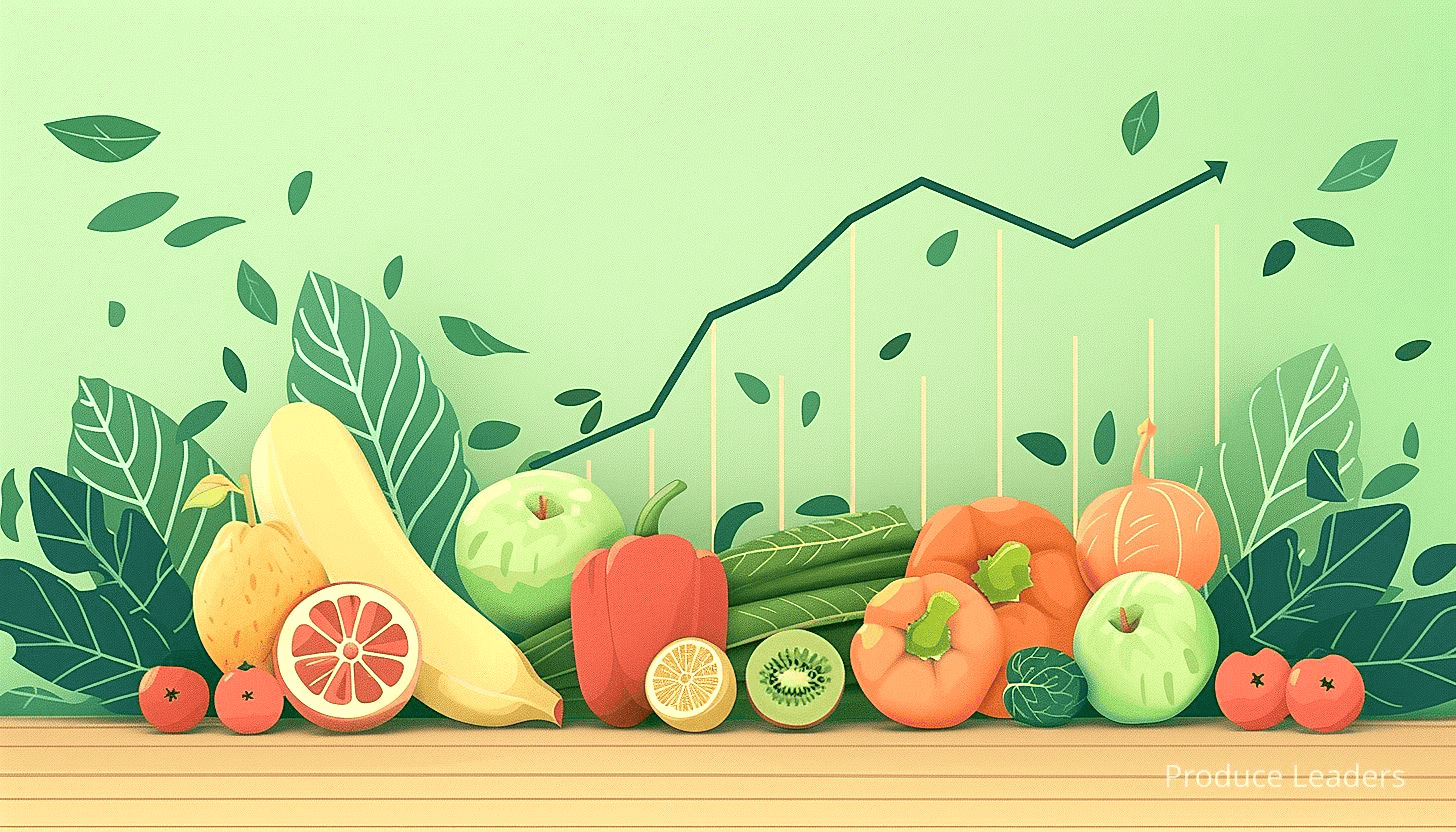
Lets now dig in into how promoting nutritious food can yield a win-win scenario for both consumers and marketers.
Dramatic changes can be seen in consumers’ overall health through regular intake of nutrient-dense foods. This can lead to a decrease in chronic diseases which is a great benefit to the community.
Studies have shown that an increase in the consumption of fruits and vegetables positively affects a person’s overall physical health. Not only can it reduce the risk of certain diseases, but it also aids in maintaining a balanced diet.
Presenting below, a few more compelling reasons why nutritious food promotion is beneficial:
- Reinforces informed decision-making.
- Encourages a balanced lifestyle.
- Creates a market for farmers schooled in sustainable agriculture.
- Helps in bringing about desired societal health outcomes.
Promoting nutritious food indeed reinforces informed decision-making on what we consume. It arms consumers with the right information to make choices that are good for their wellbeing, thereby encouraging a healthier and more balanced lifestyle.
And, have you ever thought about the positive ripple effects these practices have on our local economy and environment?
While it often goes unnoticed, nutritious food promotion creates a market for farmers practicing sustainable forms of agriculture. This is due, in part, to increased demand for organically grown produce.
Not only does it support their livelihood, but it also encourages more eco-friendly agricultural practices, ultimately contributing to environmental preservation.
Finally, let’s not overlook its potential in influencing our society’s health outcomes. Reducing the rates of lifestyle-related diseases is a huge win for our healthcare system.
There’s no doubt that promoting nutritious food multilaterally fosters healthier consumers, a robust market, and a sustainable agricultural industry. Are we ready to embrace these benefits?
Case Studies on Nutritional Education
In Short: Nutritional education significantly influences individuals’ food choices and spending patterns, boosting sales of farm-grown produce as case studies from Oregon and a Midwest university illustrate. However, this connection requires further research, underscoring nutritional education’s role in affordable healthy eating, waste reduction, and consumer health.
Individuals’ food choices and spending patterns can be tremendously influenced by nutritional education. Will the same affect the sales of farm-grown produce?
Over the last decade, multiple case studies have emerged examining this very question. Let’s examine a few noteworthy instances to get a grasp of the situation.
The first case study takes us to a rural town in Oregon, where community nutritional classes were offered. Individuals who completed the series were reportedly making healthier food choices.
The program saw a clear shift in produce sales in the local farmers’ markets, with a significant uptrend reported. How can we ignore the impact of education on such a change?
Another example hails from the classrooms of a nationally recognized university in the Midwest, which ran a unique experiment.
They introduced nutritional education as a mandatory part of their freshman orientation program. Now, isn’t it interesting to see what happened next?
Indeed, this explanation sets up for our list of observed impacts as a result of this initiative:
- Local produce sales at the campus saw a substantial increase.
- There was a reported reduction in waste generation from food courts.
- Student participants had lower incidences of health issues informed by poor diet choices.
Quite an impressive consequence, wouldn’t you agree?
We should also mention the work by a well-known health and wellness non-profit in New York City. They ran a campaign aiming to increase nutritional awareness among low-income families.
Quite predictably, an increase in the consumption of fresh produce from local markets was noticed among the campaign participants.
Increasingly, grocery stores, especially in urban areas, have started offering informational sessions about nutrition and produce benefits. Could this be a direct reaction to the growing awareness of the relationship between nutritional education and produce sales?
One key aspect to consider is that simply imparting nutritional facts isn’t enough. A crucial component of this education is also providing practical advice about making healthy choices affordable.
Isn’t it clear that only by understanding how to harvest the benefits while keeping costs down, will consumers become regular buyers of farm-fresh produce?
These case studies certainly show a strong correlation between nutritional education and produce sales. However, remember these are isolated instances and further research is essential to understand this connection at a larger scale. Would you agree that such trending data highlights the untapped power of nutritional education?
The Bottom Line
Nutritional education, at its core, serves as a cornerstone for informed food choices, affecting not just personal health but also impacting the global market and sales of produce.
The impact of nutritional education on produce sales is significant, with informed consumers more likely to invest in healthier food options.
Educated choices by consumers, driven by nutritional knowledge, tend to lean towards more nutritious produce impacting sales statistics worldwide.
Strategic nutritional campaigns influence market boost, creating a growing demand for fresh, nutritious produce.
School programs focusing on nutritional education subtly shape lunch choices of students, creating a culture of healthy eating and driving demand and sales for nutritious produce.
Retailers’ encounter with nutritional information has shown a positive shift in consumer buying patterns, leading to increased sales of produce.
Education plays a pivotal role in driving produce sales, as consumers strive to make healthier choices based on their nutritional knowledge.
Promoting nutritious food benefits not just individual health but boosts produce sales as consumers seek to make informed choices.
Case studies on nutritional education have conclusively shown a direct link between increased consumer knowledge and exponential growth in produce sales.

